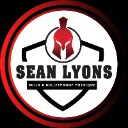
Write something
Understanding Rep Ranges for Optimal Results
The number of reps you perform in a set can have a big impact on the results you get in the gym! Here’s a quick guide to rep ranges and what they’re used for: • 1-5 Reps: Best for building maximal strength. Ideal for heavy compound lifts like squats, deadlifts, and bench press. • 6-12 Reps: This range is perfect for hypertrophy (muscle growth). If you’re looking to add size, this is where you want to focus. • 12-20+ Reps: Great for muscular endurance and conditioning. You’ll also increase time under tension, which can support fat loss and muscle definition. Use the right rep range for your goals, and mix them up for a well-rounded program! This breaks down the benefits of different rep ranges in a clear, actionable way.
0
0
Understanding Rep Ranges for Optimal Results
The number of reps you perform in a set can have a big impact on the results you get in the gym! Here’s a quick guide to rep ranges and what they’re used for: • 1-5 Reps: Best for building maximal strength. Ideal for heavy compound lifts like squats, deadlifts, and bench press. • 6-12 Reps: This range is perfect for hypertrophy (muscle growth). If you’re looking to add size, this is where you want to focus. • 12-20+ Reps: Great for muscular endurance and conditioning. You’ll also increase time under tension, which can support fat loss and muscle definition. Use the right rep range for your goals, and mix them up for a well-rounded program! This breaks down the benefits of different rep ranges in a clear, actionable way.
0
0
How To Structure A EFFECTIVE Workout
1. Warm-Up (5-10 Minutes) Start with a dynamic warm-up to get your muscles, joints, and nervous system prepared. This should elevate your heart rate and improve mobility, helping prevent injury. - Example Warm-Up: Jumping jacks, arm circles, leg swings, hip openers, and light cardio (treadmill or rower). 2. Start with a Compound Movement Compound exercises involve multiple muscle groups and joints, making them highly effective for strength and muscle growth. Start with these because they require the most energy and focus. Doing them first ensures you're at your strongest for the most physically demanding part of the workout. - Examples: - Squat (targets quads, glutes, hamstrings) - Deadlift (targets hamstrings, glutes, back) - Bench Press (targets chest, shoulders, triceps) - Overhead Press (targets shoulders, triceps, upper chest) - Pull-Ups (targets back, biceps, shoulders) Aim for 3-5 sets of 6-10 reps, depending on whether you're prioritizing strength (lower reps, heavier weights) or hypertrophy (higher reps, moderate weight). 3. Move to Isolation Exercises (3 Movements) Once you’ve completed your compound lift, shift to isolation exercises to target specific muscles. These exercises allow you to focus on individual muscle groups and bring up any weak points, like biceps, shoulders, or triceps. Choose three isolations to balance your workout. Examples: Chest Day: - Incline Dumbbell Press (targets upper chest) - Chest Flyes (isolates chest) - Tricep Pushdowns (isolates triceps) - Leg Day: - Leg Curls (isolates hamstrings) - Leg Extensions (isolates quads) - Bulgarian Split Squats (isolate quads/glutes) - Back Day: - Lat Pulldowns (isolates lats) - Dumbbell Rows (isolates mid-back) - Face Pulls (targets rear delts/traps) Aim for 3-4 sets of 10-15 reps for each isolation movement. The higher rep range helps to induce hypertrophy, fatigue the muscle, and improve the mind-muscle connection.
0
0
1-3 of 3

skool.com/lyons-den-fat-loss-accelerator-9453
The Fat Loss Accelerator is designed specifically for busy professionals who want to lose 10-20lbs of fat and transform their bodies in just 60 days
powered by

